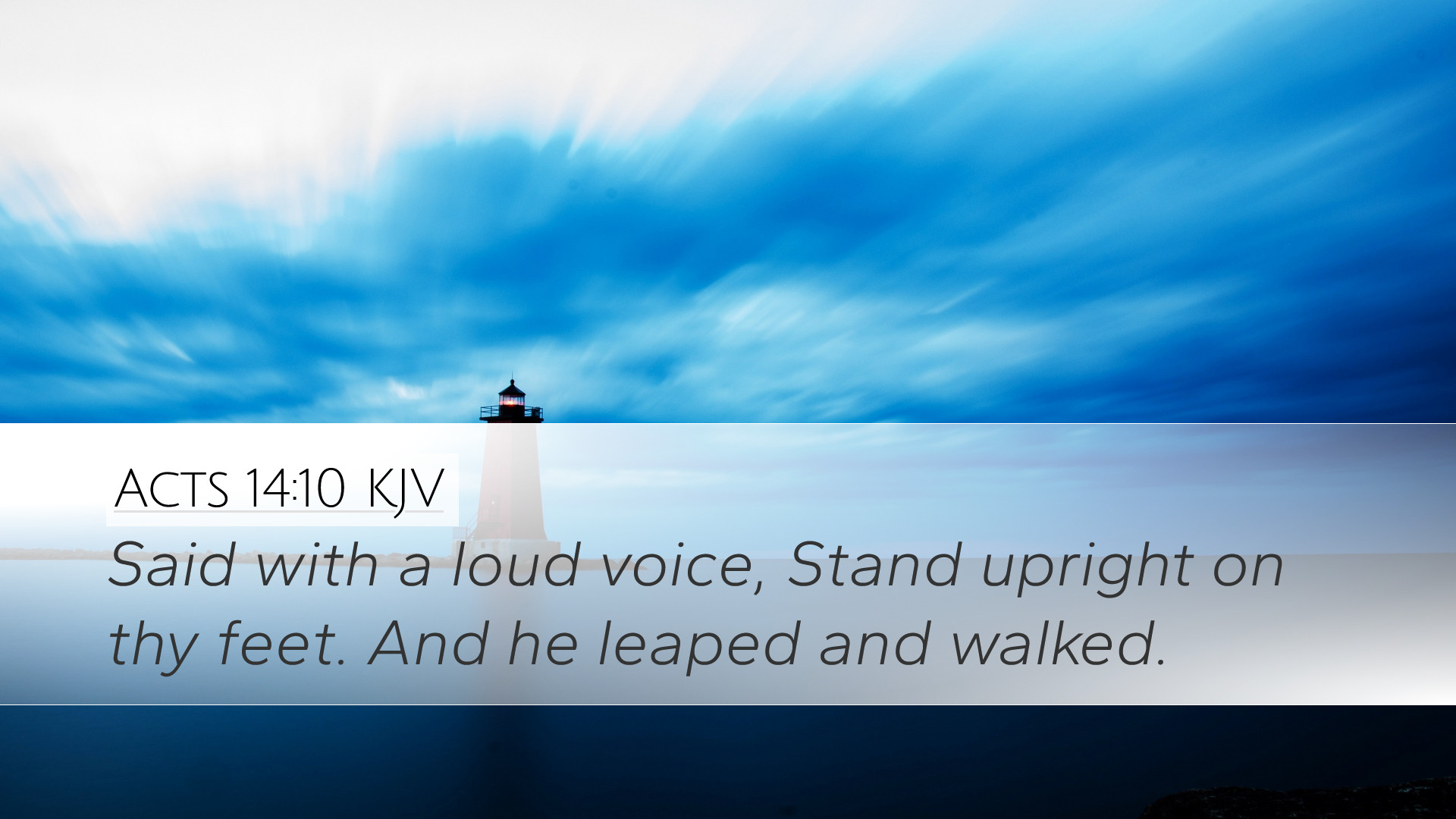Commentary on Acts 14:10
Acts 14:10 states, "Said with a loud voice, Stand upright on thy feet. And he leaped and walked." This profound moment captures the essence of faith, healing, and the demonstration of God's power through the apostles. A thorough examination of this verse reveals the layers of theological significance embedded within it.
Contextual Overview
The account in Acts 14 takes place during Paul and Barnabas' missionary journey. They arrive in Lystra, a city in Lycaonia, where they encounter a man who had been crippled from birth. The context of this miracle is vital; it showcases the apostolic authority and the gospel's transformative power.
The Authority of the Apostles
Matthew Henry notes that Paul "observed the man," showing that the apostles were attentive to the needs of others and sensitive to the Spirit's prompting. This characteristic of apostleship is crucial as it reflects a pastoral heart. Paul’s call to the man, "Stand upright on thy feet," is not just a command but an assertion of his authority as a servant of Christ. Paul’s confidence here demonstrates an essential aspect of faith: believing in God's power to heal and restore.
The Role of Faith in Healing
Albert Barnes emphasizes the man's faith as a critical component before the healing occurred. He notes that the text suggests that the man "had faith to be healed," indicating that a response of faith is often necessary to activate divine healing. Barnes cites other instances in scripture where faith preceded a miracle, reinforcing that divine intervention usually requires human cooperation through faith.
The Response of the Healed Man
Following Paul's command, the man's immediate response is noteworthy: "he leaped and walked." Adam Clarke points out that this reaction signifies a complete restoration, not just a physical healing. The leaping denotes joy and exuberance, indicating that the healing was not only physical but emotional and spiritual. Such a profound response reflects the transformative nature of divine miracles, where the recipients often go beyond their previous limitations.
Theological Implications
- Divine Power: The miracle demonstrates God's sovereignty and power to intervene in human conditions.
- Witness to the Gentiles: This event occurs in a predominantly Gentile area, illustrating that the gospel is for all, not just the Jews. The miracle serves as a sign that invites the onlookers to faith.
- Faith and Community: The healed man's leap and walk serve as a testimony to the surrounding community, encouraging collective faith and unity around the gospel message.
Practical Applications for Believers
For pastors and theologians, this passage calls to reflection on the nature of faith in their ministries. The focus should not solely rest on the act of healing but also on cultivating an environment where faith can flourish. Here are a few practical applications:
- Sensitivity to the Holy Spirit: Just as Paul observed the man, ministers should cultivate an awareness of the needs of those they serve, responding to the Holy Spirit's leading.
- Encourage Faith: Teaching about the role of faith in healing and miracles fosters hope and expectation among believers.
- Fostering Community Witness: The witness of miraculous events can lead to broader discussions about faith, encouraging the body of Christ to proclaim the gospel through their testimonies.
Conclusion
Acts 14:10 encapsulates a pivotal moment in the proclamation of the gospel through the miraculous work of God. By combining insights from public domain commentaries, we see the interwoven themes of faith, authority, and divine power. As modern-day believers engage with this scripture, let it serve as a powerful reminder of God's ongoing work in the world and the importance of faith in experiencing His transformative power.


